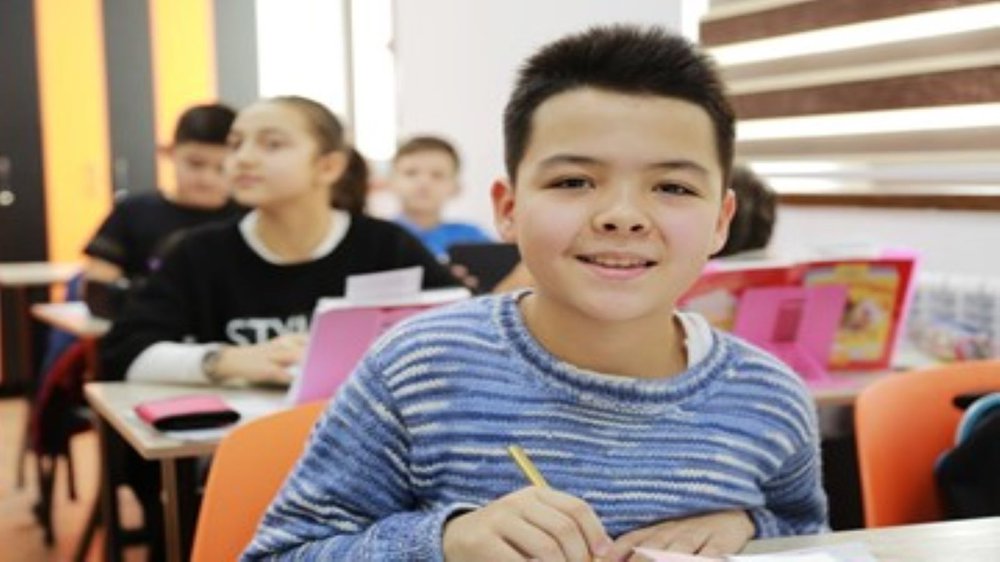How we’re using our social-emotional learning curriculum to put relationships into focus, create strong bonds with students, and gauge what’s really going on in the classroom.
With a student population that’s about 70% Hispanic, our fast-growing school district started using a social-emotional learning (SEL) curriculum for the 2019-20 school year. When the pandemic altered how we taught those students, we already had the framework in place to ensure that our diverse population had ample access to that SEL curriculum.
As educators, we have to address SEL and the issues students are dealing with after the past 18-months if we have any chance of our students thriving in school and beyond.
Our district did a 5-campus pilot of an SEL program in 2019. Pleased with the results, the district decided to roll out the SEL curriculum across all schools. We also partnered with Panorama, which uses data to measure the benefits of the SEL curriculum. Some of our campuses, for instance, have seen reduced disciplinary incidents due to the curriculum, along with happier teachers and more engaged students.
Right Out of the Gate
Coming in as a first-year principal for the 2020-21 year, I was able to immerse myself in our SEL curriculum. In fact, one of the first things I did was get together with the leadership team here, review the SEL curriculum, and then integrate some of those SEL ideas into our campus vision. For example, the “we are connected” mindset became an important consideration for this most recent school year.
Part of my campus vision this year was that we will positively engage in the lives of our Keefer Crossing Middle School family. We will see value in lives that are different than our own, and seek to build our capacity for empathy in order to grow and mold our school’s culture. It really set the trajectory for the rest of the school year.
For example, we have a 30-minute period each Monday where kids meet with a homeroom teacher and review one of the SEL lessons. We started that on the very first day of school, and we built that time into the curriculum to show students that we're not just concerned with math, science, English, and social studies; we're concerned with them, and we want to grow each one of them—as a person—by talking about what's going on in their worlds and in their lives.
Taking this step shows students that relationships are important to us. Reflecting back, I can remember some of my favorite teachers and realize that it wasn’t content that I loved, but mainly the time they invested in me. That’s exactly what our curriculum does; it puts those relationships into focus and show what’s really going on in the classroom.
Promoting Culture Appreciation
For us, SEL goes well beyond lip service and plays out in our hallways on a daily basis. When our awesome school counselor wanted to create a multicultural program called the “Culture Crew,” we launched that program during Hispanic Heritage Month. Through it, we celebrate different cultures every month. We decorated the entire school with the goal of creating a warm, welcoming environment for all students as they came back to campus for the first time in six months.
During Hispanic Heritage Month, we celebrated our large population of Hispanic students by reading about an important figure from Hispanic culture during the morning announcements. We even had a traditional Latino dance in the cafeteria. At the end of the month, we got a group of volunteer students who wanted to watch the Disney movie Coco together. We provided the snacks and also a craft project that represented the Hispanic culture.
Since then, we've replicated that every month done for different cultures, and it's definitely something that we'll continue. It's become a really special club, and a significant aspect of our school culture.
Thinking Outside of Themselves
Our SEL curriculum also helps students think outside of themselves and help others live their best lives. Last Christmas, for example, three sixth-graders came into my office and said, "Mr. Powell, there's a kid that’s in need, and we're afraid that he's not going to have a good Christmas. Is there any way that we can do something to make sure that he has a good Christmas this year?" It made me so happy that these three students came and sat down in my office and we had that conversation.
"Absolutely," I said. "Let's support him and other families as well." Using the “live to give” mindset as a foundation, we came up with a plan to adopt families that were in need. Roughly 20 families needed help for the holidays, and I let the students raise money to put me on the roof (once we hit certain donation thresholds, I’d have to spend the night on that roof, dress up like Santa Claus, or do some other silly thing). They raised a ton of money and we were able to support these families. (Incidentally, I did spend one night on the roof – and it happened to be 17 degrees that night.)
The recipient families came in after class on that last day of school to pick everything up and express their gratitude. Our staff support was overwhelming; we had people standing around, just wanting to be there and be a part of it. The families couldn't have been more thankful and surprised that a school was filling that need in the community.
That's a paradigm that I’d like to help change. I think most educators are in this because we have hearts that want to serve. I feel like that's communicated in the community that I live in, and the people know the school is a place that they can come to if they need help. And so, our families felt loved, and that's ultimately what we wanted.
About the author
Jonathan Powell is Principal at Keefer Crossing Middle School in New Caney, TX.










